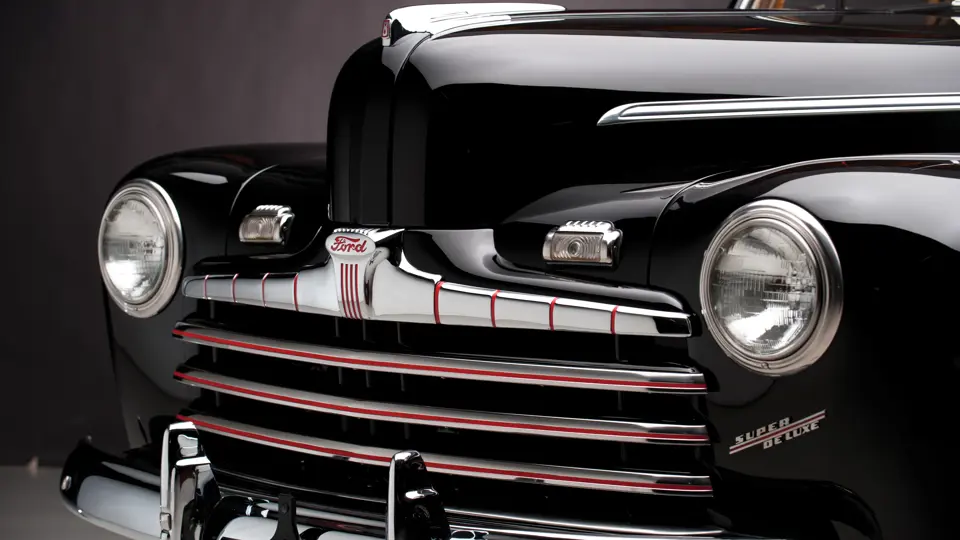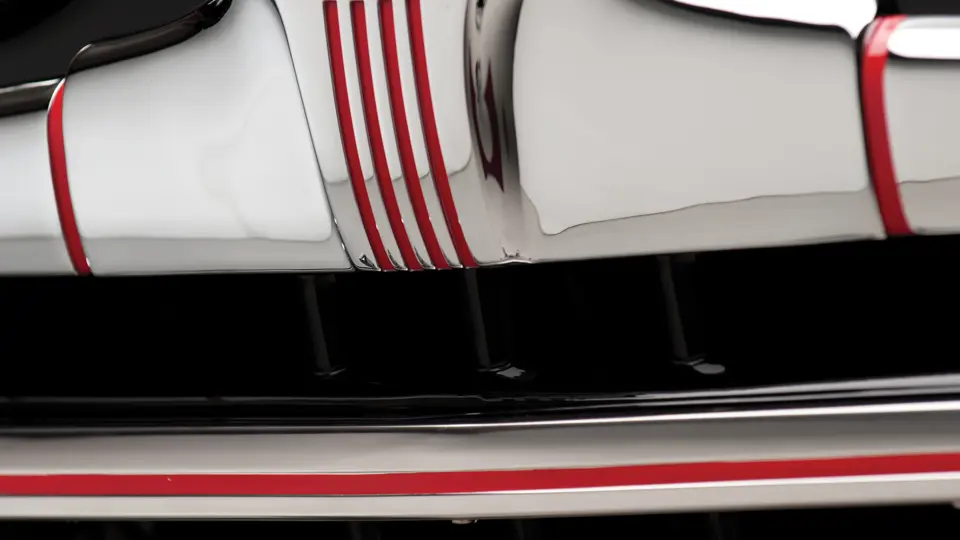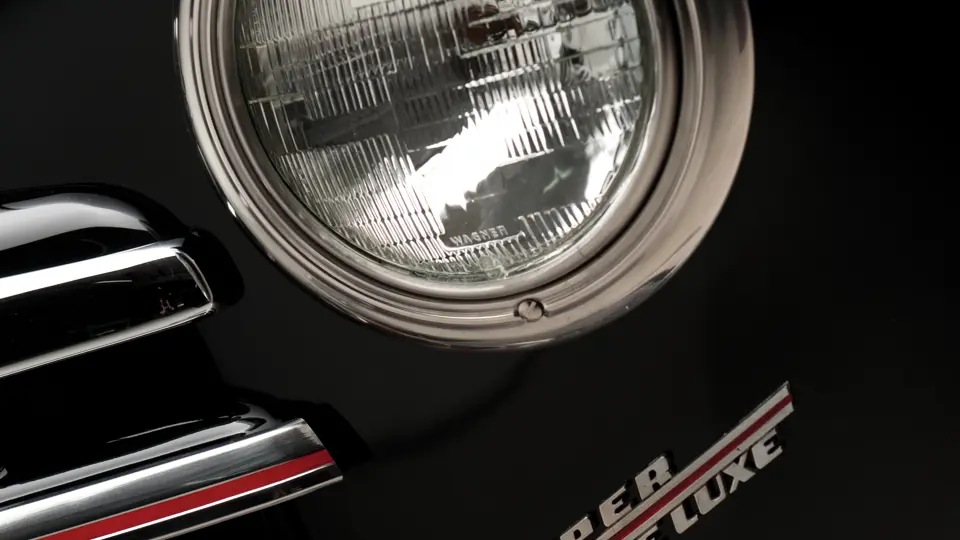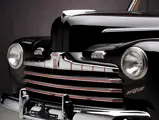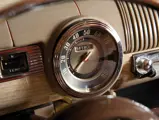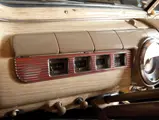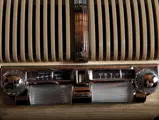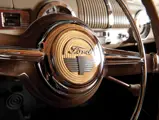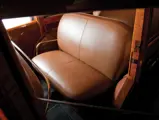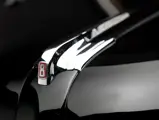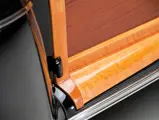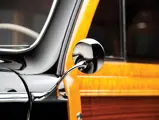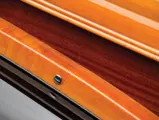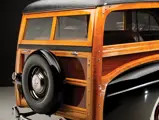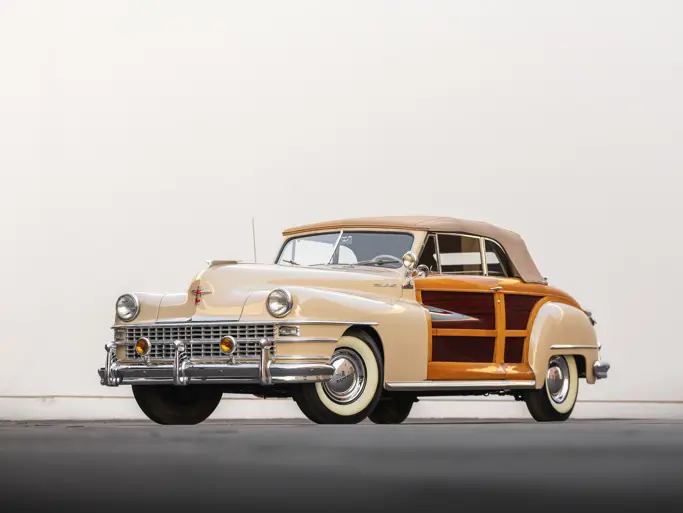MODEL 69A. 100 bhp, 239.4 cu. in. L-head V-8 engine, three-speed manual transmission, solid front axle and live rear axle with transverse semi-elliptic leaf springs, and four-wheel hydraulic drum brakes. Wheelbase: 114"
Ford was the first U.S. automaker to resume production at the end of World War II. The assembly lines commenced operation on July 3, 1945, before hostilities had ceased completely in the Pacific. The company had the advantage of being authorized to restart civilian truck manufacture in April 1944. Still, it took time to reach satisfactory production levels, and the more complex styles, like station wagons, took even longer. The Iron Mountain plant had produced glider parts during the war but had kept a stock of 1942 wagon parts on hand for the day that assembly could resume. Because engineering and development work had halted during the war, all 1946 Fords and Mercurys were very slightly re-styled and re-trimmed versions of their 1942 counterparts.
Postwar optimism, and the resumption of prewar activities, boded well for station wagon production. Annual sales quickly rebounded, passing 1941 levels, as returning GIs found Ford woodies ideal for transporting their baby boom offspring and assisting in the completion of projects on their newly-built suburban homes.
Because the conversion of wartime production back to automobiles took priority, and because development work had been curtailed during the war, 1946 cars had few changes from 1942. Fords had new, bolder grilles but no other external differences, other than red accents, added to the brightwork and interior. Deluxe Station Wagons were discontinued, all wagons now being built as Super Deluxe models. Six-cylinder engines were available but few people ordered them for station wagons, despite the fact that the new powerplant was almost as powerful as the V-8.
Most significant was the fact that all V-8 Fords now used the Mercury-derived 239 cubic inch, 100 bhp engine. Slight changes from 1942 involved the ignition system and a new casting for the cylinder block, the latter taking its “59A” designation from the Ford project code.
This 1946 Ford Super Deluxe Station Wagon was purchased from Thomas Cavanaugh, of York Beach, Maine, in August 2007. An older restoration when acquired, it was sent to Lowrey’s Auto Restoration for a complete rebuild, which was completed early in 2011 at a cost of nearly $225,000, the result of which is simply spectacular, and it has returned the car back to its original appearance, when a returning GI might have bought it new. This involved new wood, as well as a complete mechanical and cosmetic restoration. As presented, it has stunning black paint, excellent contours, and rich, finely varnished wood. The roof is covered in authentic black artificial leather. Seats are brown leather in the correct pattern, floor mats are correct black rubber, and the dashboard has exquisite plastic moldings with correct red accents. A Ford radio, with windshield header antenna, is installed in the dashboard.
The engine compartment is properly detailed, with the engine in Mercury Blue. All of it is fastidiously clean and carefully presented without being overdone, right down to the correct hardware. Underneath, the car is similarly sanitary, having been driven so little that the exhaust system looks almost unused. It runs on Firestone 6.50x16 wide whitewall tires. Mileage shown is 84,180, believed to be accurate.
Ford set a new record for station wagons in 1946, with 16,920 built, all of them in the Super Deluxe line. This car surely sets a new standard for desirability.

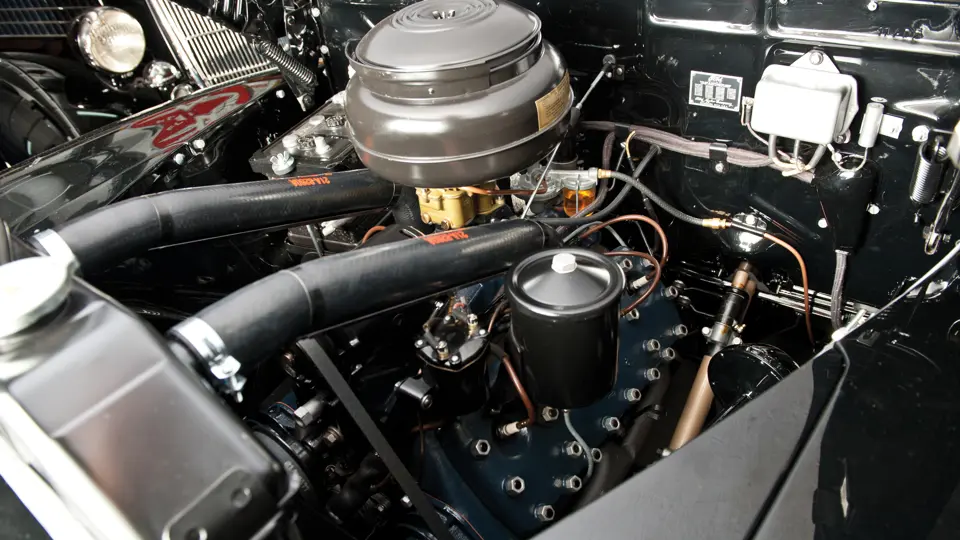
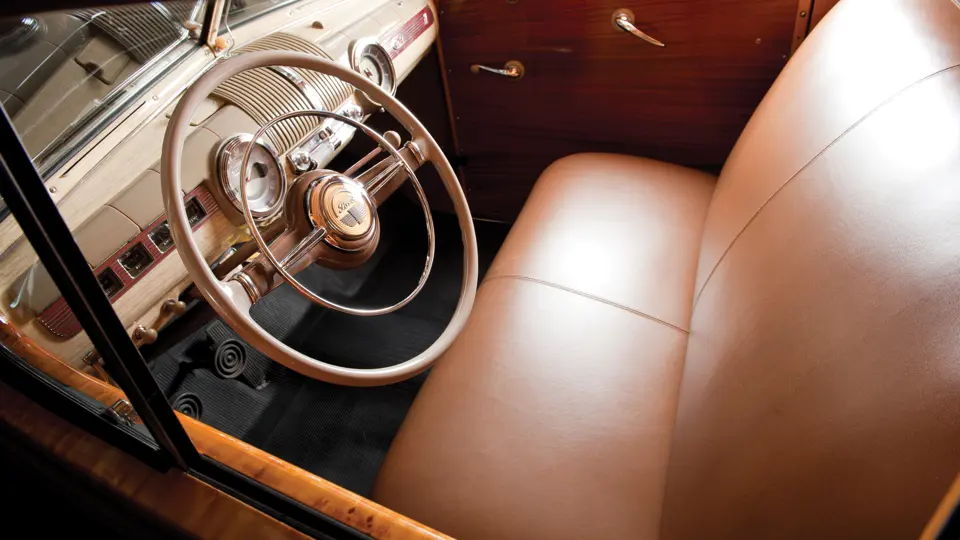

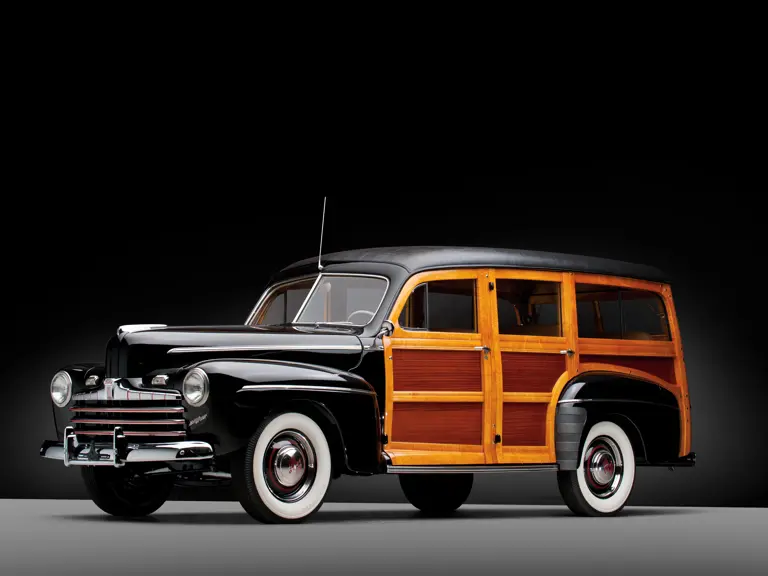
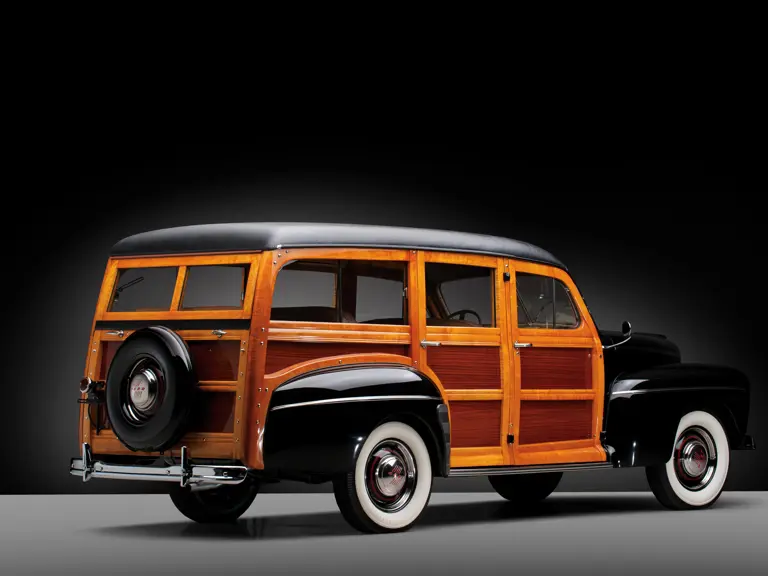

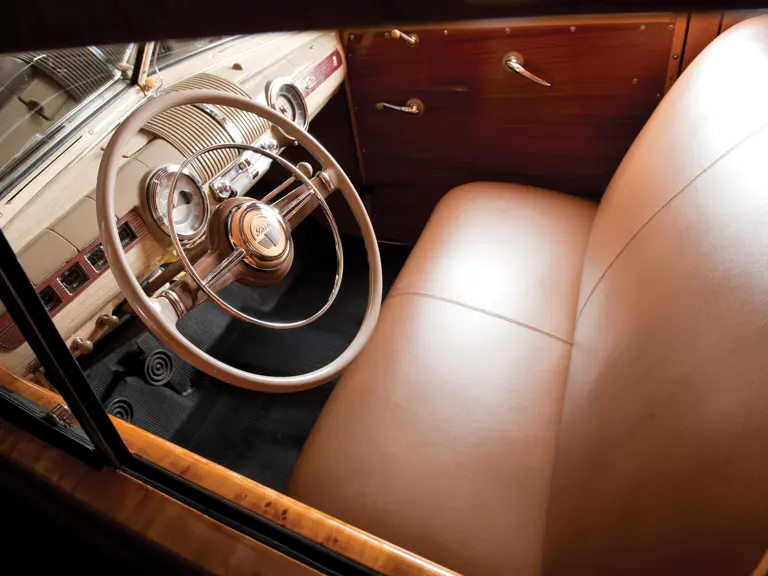


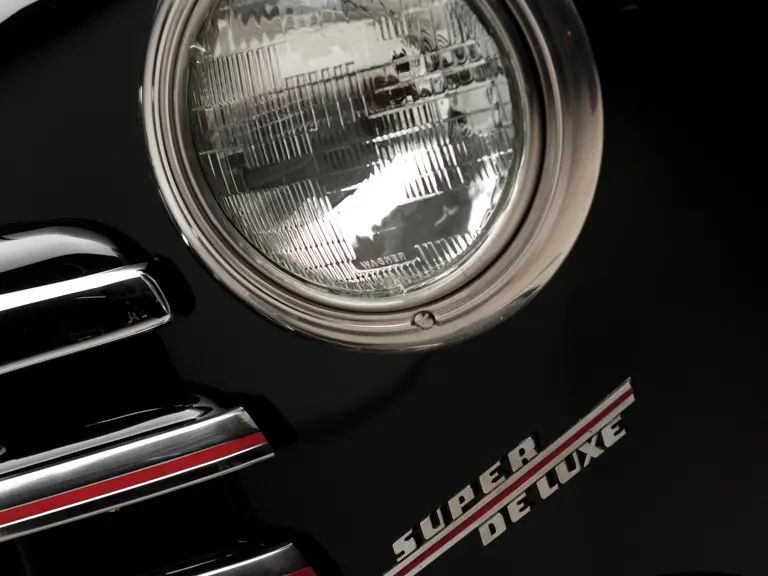


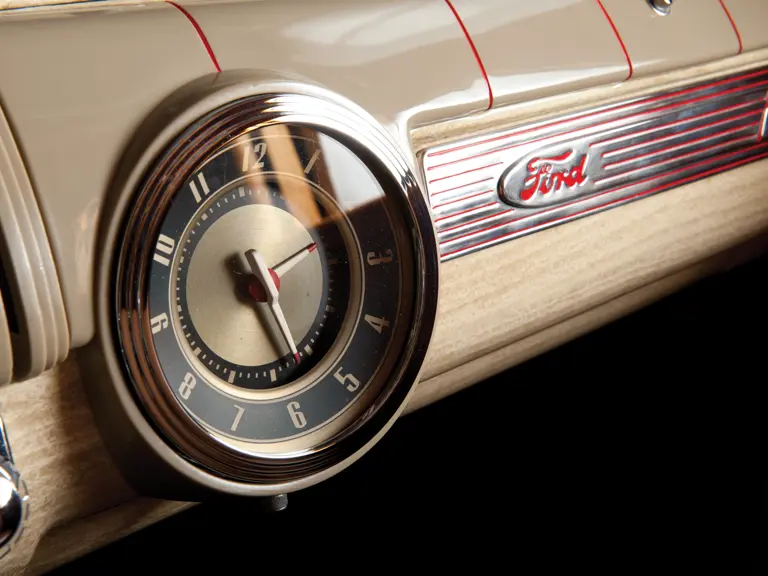
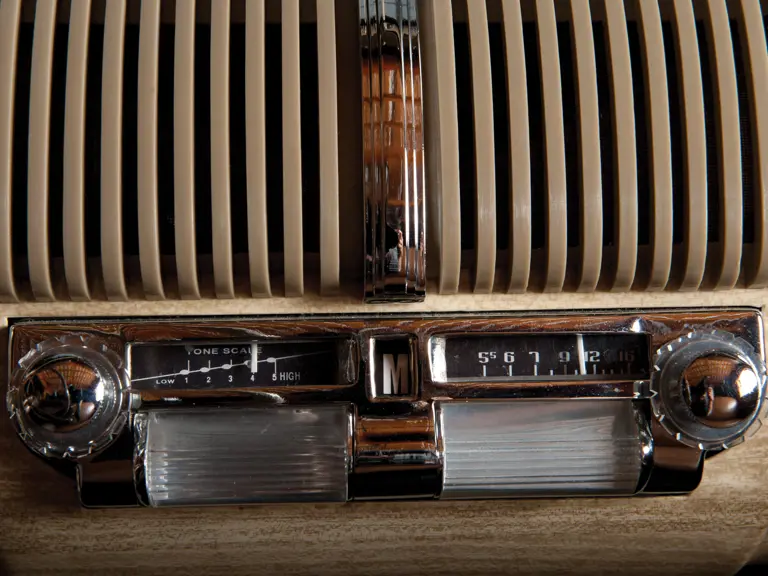
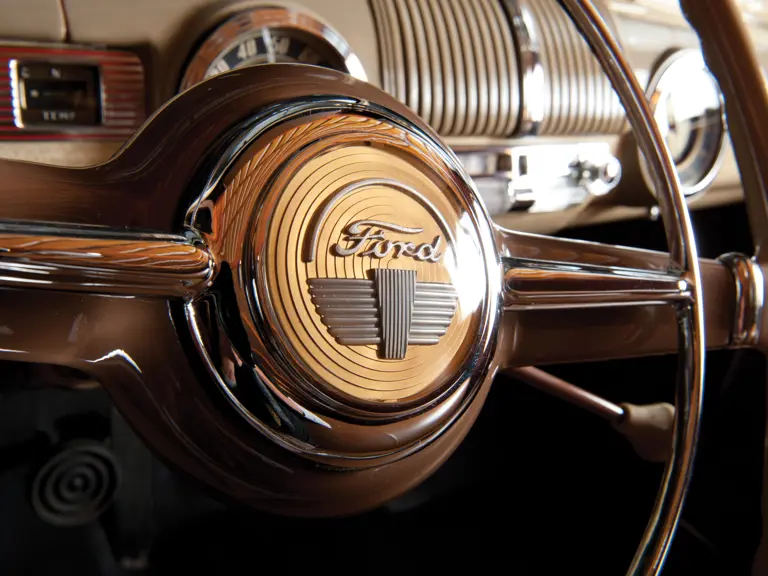
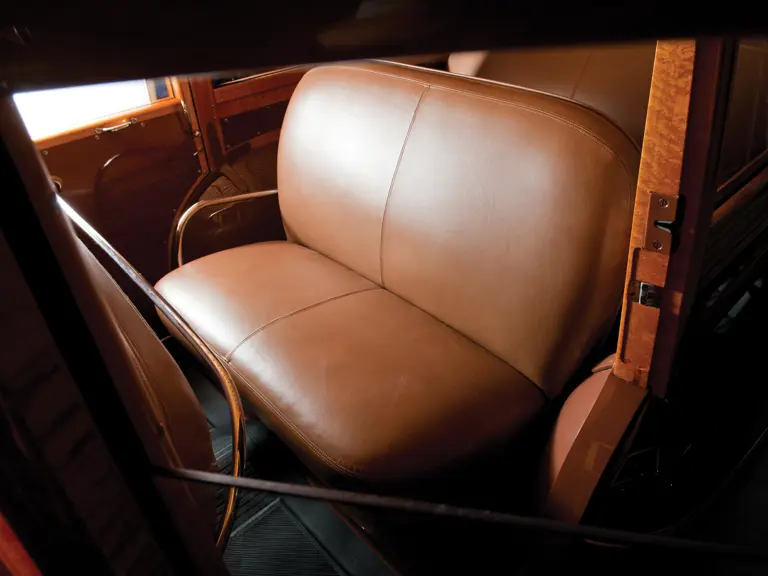
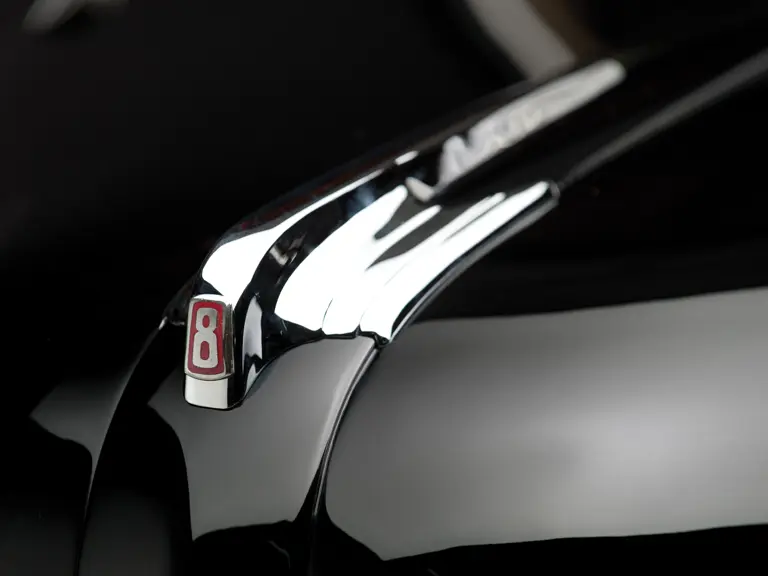
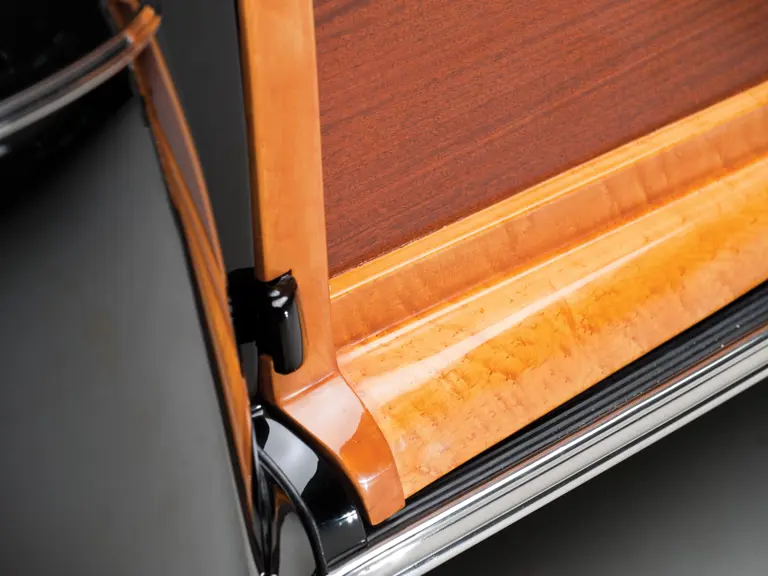
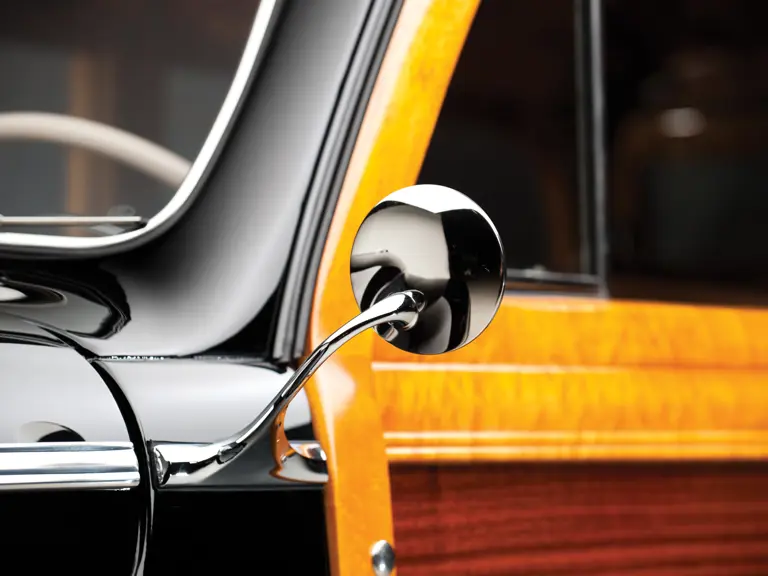
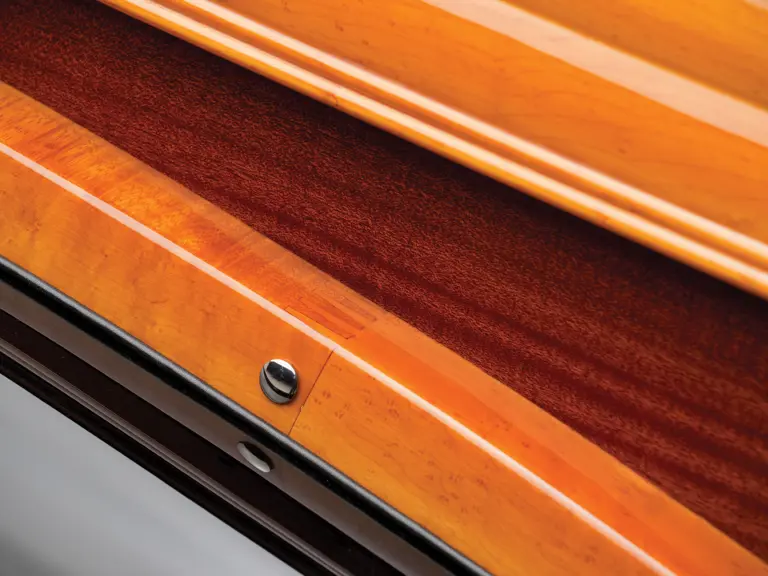


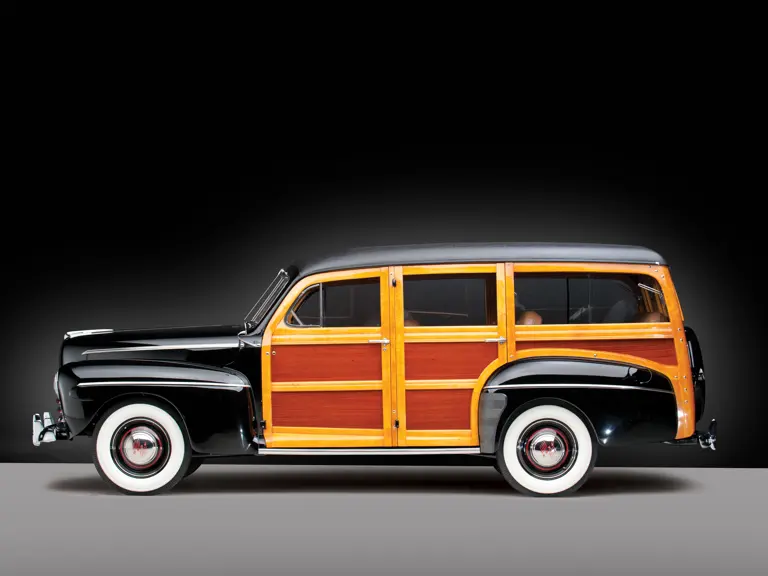

 | Hampton, New Hampshire
| Hampton, New Hampshire
